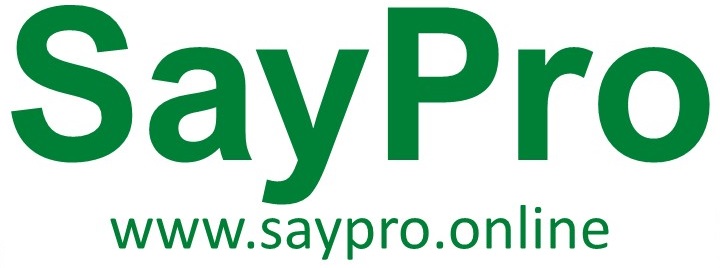SayPro, in collaboration with the United States Peace Corps, is establishing community-based disaster preparedness and resilience programs that equip vulnerable communities with the tools, knowledge, and systems needed to face emergencies. SayPro understands that many areas lack the infrastructure or awareness to respond effectively to natural or human-made disasters. Through workshops, simulation exercises, and training modules, SayPro educates local populations on risk assessment, evacuation planning, and first aid. Peace Corps volunteers assist SayPro in translating global best practices into locally applicable actions. SayPro includes schools, religious institutions, and local government units in building community-wide disaster plans. By involving all stakeholders, SayPro ensures rapid response and minimal loss during crises. SayPro’s programs empower communities to take control of their safety and reduce dependency on delayed outside aid. These efforts align with SayPro’s mission to foster self-reliant, resilient, and well-prepared communities across the region.
SayPro’s disaster preparedness initiatives emphasize inclusive participation, ensuring that women, the elderly, persons with disabilities, and youth all have roles in preparedness planning. SayPro trains community emergency response teams (CERTs) that act as first responders during disasters. These volunteers are equipped with basic rescue tools, communication protocols, and safety gear provided by SayPro. Peace Corps volunteers support these teams with coordination drills and regular refresher trainings. SayPro also introduces community hazard maps and warning systems tailored to regional risks like floods, earthquakes, or wildfires. These tools are displayed in public spaces and regularly updated. SayPro’s mobile awareness campaigns, including radio broadcasts and SMS alerts, reach even the most remote areas. SayPro ensures that every household knows how to act when disaster strikes. Through proactive planning and localized approaches, SayPro turns passive risk into active resilience.
SayPro integrates disaster education into local school curriculums and community events. Children learn about climate change, safety drills, and emergency numbers through engaging activities designed by SayPro and supported by Peace Corps educators. SayPro also organizes village-wide mock drills, involving everyone from shopkeepers to religious leaders, to practice coordinated evacuation procedures. Local health clinics are supported with emergency supply kits and training in mass casualty response. SayPro fosters public-private partnerships to ensure sustainable funding and supply chains for resilience initiatives. SayPro’s model is built not just for survival but for recovery and adaptation. Communities are trained to rebuild quickly and with better infrastructure. Through capacity building and resource allocation, SayPro ensures that disaster-prone areas do not remain in cycles of vulnerability. SayPro’s inclusive and action-driven approach guarantees that entire communities learn, prepare, and adapt together.
SayPro evaluates its disaster programs through metrics like community readiness scores, reduced casualty rates, and speed of response during drills. Feedback from local leaders and Peace Corps volunteers helps SayPro fine-tune its efforts. SayPro also collaborates with meteorological agencies and research institutions to incorporate climate forecasting into planning. SayPro’s vision is to scale these programs nationally, adapting them to diverse geographies and hazard profiles. The long-term goal is to create a culture of safety where preparedness becomes part of daily life. SayPro believes that disaster resilience is a right, not a luxury, and works to ensure that even the most disadvantaged communities are protected. With ongoing support from the Peace Corps, SayPro will continue to innovate and lead in community-based risk reduction. SayPro stands ready—not just to respond to disasters, but to prevent and overcome them through local strength.
